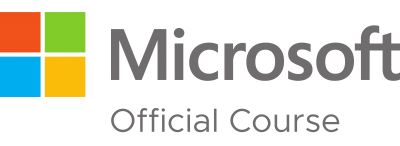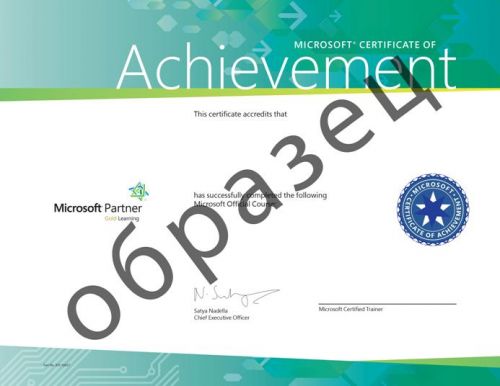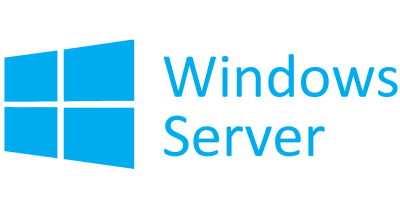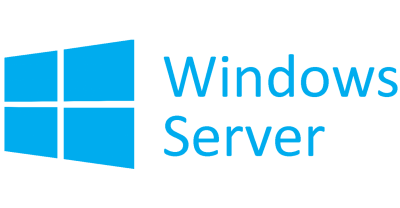Основы Microsoft Azure (AZ-900T00)

Microsoft Azure Fundamentals
Настоящая программа обучения предоставляет базовые знания об облачных концепциях, архитектуре и службах Azure, а также функциях и средствах управления и контроля в Azure. Курс может быть выбран в качестве первого шага в изучении облачных сервисов и Microsoft Azure, перед прохождением других курсов по Microsoft Azure или курсов Microsoft по облачным сервисам.
Целевая аудитория
Этот курс подходит для IT-персонала, который только начинает работать с Azure. Эта аудитория хочет узнать о предложениях Microsoft и получить практический опыт работы с продуктом. На этом курсе в основном используется портал Azure и интерфейс командной строки для создания служб. Навыки написания скриптов не требуются. Слушатели этого курса смогут быть уверены, что они пройдут другие курсы и сертификации на основе ролей, например Azure Administrator. Этот курс содержит лекции, демонстрации и практические занятия. Этот курс также поможет кому-то подготовиться к экзамену AZ-900.
Предварительные требования
Для прохождения этого курса нет предварительных требований. Знакомство с облачными вычислениями — желательно, но необязательно.
Программа курса
Module 1: Describe cloud computing
- Define cloud computing.
- Describe the shared responsibility model.
- Define cloud models, including public, private, and hybrid.
- Identify appropriate use cases for each cloud model.
- Describe the consumption-based model.
- Compare cloud pricing models.
Module 2: Describe the benefits of using cloud services
- Describe the benefits of high availability and scalability in the cloud.
- Describe the benefits of reliability and predictability in the cloud.
- Describe the benefits of security and governance in the cloud.
- Describe the benefits of manageability in the cloud.
Module 3: Describe cloud service types
- Describe Infrastructure as a Service (IaaS).
- Describe Platform as a Service (PaaS).
- Describe Software as a Service (SaaS).
- Identify appropriate use cases for each cloud service (IaaS, PaaS, SaaS).
Module 4: Describe the core architectural components of Azure
- Describe Azure regions, region pairs, and sovereign regions
- Describe Availability Zones
- Describe Azure datacenters
- Describe Azure resources and Resource Groups
- Describe subscriptions
- Describe management groups
- Describe the hierarchy of resource groups, subscriptions, and management groups
Module 5: Describe Azure compute and networking services
- Compare compute types, including container instances, virtual machines, and functions
- Describe virtual machine (VM) options, including VMs, virtual machine scale sets, availability sets, Azure Virtual Desktop
- Describe resources required for virtual machines
- Describe application hosting options, including Azure Web Apps, containers, and virtual machines
- Describe virtual networking, including the purpose of Azure Virtual Networks, Azure virtual subnets, peering, Azure DNS, VPN Gateway, and ExpressRoute
- Define public and private endpoints
Module 6: Describe Azure storage services
- Compare Azure storage services
- Describe storage tiers
- Describe redundancy options
- Describe storage account options and storage types
- Identify options for moving files, including AzCopy, Azure Storage Explorer, and Azure File Sync
- Describe migration options, including Azure Migrate and Azure Data Box
Module 7: Describe Azure identity, access, and security
- Describe directory services in Azure, including Azure Active Directory (AD) and Azure AD DS
- Describe authentication methods in Azure, including single sign-on (SSO), multifactor authentication (MFA), and passwordless
- Describe external identities and guest access in Azure
- Describe Azure AD Conditional Access
- Describe Azure Role Based Access Control (RBAC)
- Describe the concept of Zero Trust
- Describe the purpose of the defense in depth model
- Describe the purpose of Microsoft Defender for Cloud
Module 8: Describe cost management in Azure
- Describe factors that can affect costs in Azure
- Compare the Pricing calculator and Total Cost of Ownership (TCO) calculator
- Describe Azure Cost Management Tool
- Describe the purpose of tags
Module 9: Describe features and tools in Azure for governance and compliance
- Describe the purpose of Azure Blueprints
- Describe the purpose of Azure Policy
- Describe the purpose of resource locks
- Describe the purpose of the Service Trust portal
Module 10: Describe features and tools for managing and deploying Azure resources
- Describe Azure portal
- Describe Azure Cloud Shell, including Azure CLI and Azure PowerShell
- Describe the purpose of Azure Arc
- Describe Azure Resource Manager (ARM) and Azure ARM templates
Module 11: Describe monitoring tools in Azure
- Describe the purpose of Azure Advisor
- Describe Azure Service Health
- Describe Azure Monitor, including Azure Log Analytics, Azure Monitor Alerts, and Application Insights
Группа
- от 5 человек
Документы об окончании курса
- Сертификат Microsoft об окончании авторизованного курса
- Сертификат Учебного центра Noventiq
- Cертификат об обучении установленного образца
Информация о курсе
600 BYN
с учетом НДС 20%








